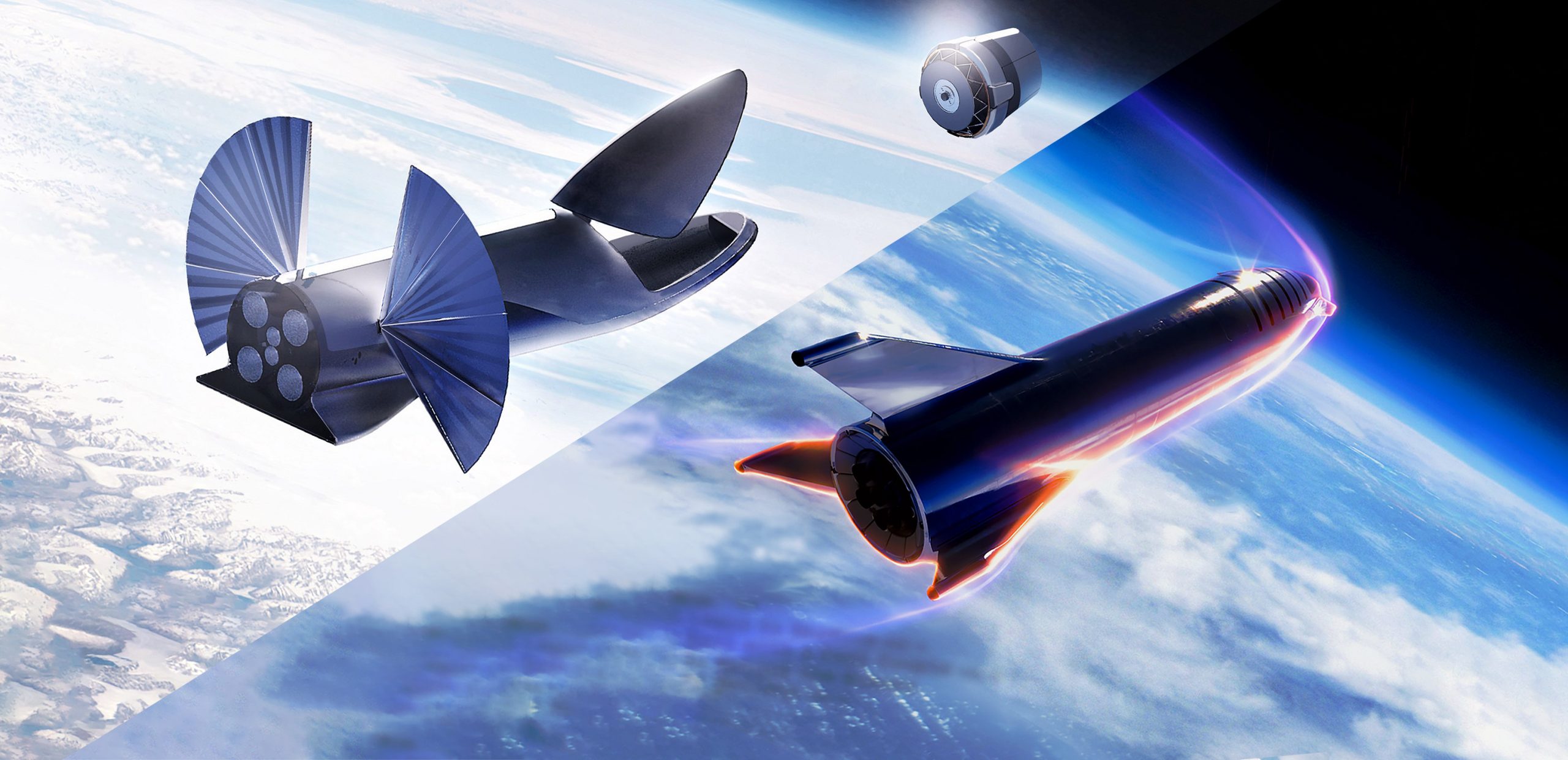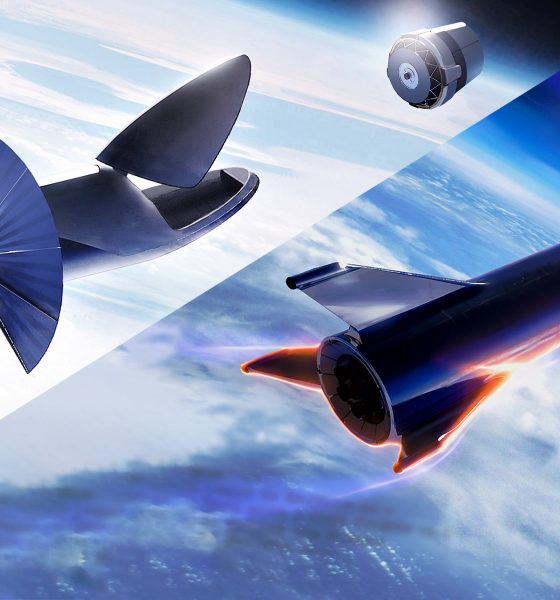

News
SpaceX’s Starship could launch secret Turkish satellite, says Gwynne Shotwell
According to SpaceX COO/President Gwynne Shotwell and a Turkish satellite industry official, Starship and Super Heavy may have a role to play in the launch of Turksat’s first domestically-procured communications satellite.
Per Shotwell’s specific phrasing, this comes as a bit of a surprise. Built by Airbus Defense and Space, SpaceX is already on contract to launch Turksat’s 5A and 5B communications satellites as early as Q2 2020 and Q1 2021, respectively. The spacecraft referred to in the context of Starship is the generation meant to follow 5A/5B: Turksat 6A and any follow-on variants. Turksat’s 6-series satellites will be designed and manufactured domestically rather than procured from non-Turkish heavyweights like Airbus or SSL. However, the Turksat 6A satellite’s current baseline specifications would make it an extremely odd fit for a launch vehicle as large as Starship/Super Heavy.
Curiously, in written statements to Turkish media outlets, Turkish Aerospace Industries (TAI) referred to a “Turksat 6A2” satellite for the first time ever. Prior to comments made at the Satellite 2019 conference, Turksat’s prospects beyond 5A/5B were simply referred to as “Turksat 6A”, a ~4300 kg (9500 lb) domestically-built communications satellite scheduled for completion no earlier than the end of 2020. Turksat 5A and 5B will both be approximately 4500 kg (9900 lb), well within the capability of the flight-proven Falcon 9 rockets they are expected to launch on.
Why, then, might Starship “[potentially] work for the next Turksat project”, as suggested by Shotwell? Referring to what Turksat GM Cenk Sen then described as “6A2”, Shotwell noted that the satellite would be “quite a large, complex satellite.” While undeniably massive relative to almost anything else, the 4300-kg Turksat 6A is actually in the middle of the road (maybe even on the smaller side) relative to most geostationary communications satellites built and launched in the last few years.


We’re gonna need a bigger speculation…
SpaceX COO and President Gwynne Shotwell would know this as intimately as anyone, given her essential role at the head of the launch services provider. Most recently, SpaceX used Falcon Heavy to launch Arabsat 6A (6500 kg/14,300 lb) to a uniquely high transfer orbit of ~90,000 km (56,000 mi). In the second half of 2018, Falcon 9 was also tasked with launching Telstar 18V (7060 kg/15,560 lb) and 19V (7076 kg/15,600 lb) to geostationary transfer orbits (GTO), with 19V technically becoming the heaviest commercial communications satellite ever launched.
SpaceX is also just a few days away from launching 60 Starlink test satellites, reportedly set to become the company’s heaviest payload ever with a mass greater than ~13,000 kg (30,000 lb). Put simply, SpaceX is about as familiar as one can possibly get with not only launching – but even building – truly massive and complex satellite payloads.



In short, it appears that “Turksat 6A2” may refer to an extremely ambitious follow-on to Turksat 6A (perhaps 6A1?). To warrant the use of Starship over the then highly-proven and well-paved Falcon 9 or Heavy, Turksat 6A2 would indeed have to be what Shotwell referred to as “quite a large, complex satellite”. In a recoverable configuration, Falcon 9 is capable of placing about 5500-6000 kg into a full GTO. Falcon Heavy allows for 8000-10000 kg, with the latter option assuming that all three boosters land on drone ships. Steel Starship’s performance – with or without tanker refueling – is effectively an unknown quantity at this point in time, although SpaceX CEO Elon Musk says more Starship info will be provided this year at a dedicated June 20th event.
Aside from questions of payload performance of Starship/Super Heavy relative to Falcon 9/Heavy, it’s unclear when the next-gen SpaceX rocket will actually be ready to start launching commercial payloads. Back in December 2018, Musk estimated that Starship had a 60% chance of reaching orbit by the end of 2020, with confidence on the rise as the company transitioned BFR’s structure from carbon composites to stainless steel. Four months after that estimate, a low-fidelity Starship prototype – nicknamed Starhopper – successfully completed two Raptor-powered test fires, straining a few feet into the air against large tethers. Meanwhile, Raptor testing continues in McGregor, Texas, while progress is also being made on what is said to be the first orbit-capable Starship prototype a few thousand feet from Starhopper.
A long path to orbit
Before SpaceX can begin orbital launch attempts with Starship, the company will need to build a new launch complex (or develop a floating launch platform), complete with processing and integration facilities also built from the ground up. Additionally, at least one massive Super Heavy booster will be needed for Starship to deliver more than just itself to orbit. Starship’s unprecedented metallic heat shield will need to be made flight-ready, while a minimum of 38 Raptor engines will need to be built and tested. In short, a huge amount of work needs to be done before Starship and its associated facilities will be capable of launching high-value customer payloads.

In other words, any prospective Cargo Starship customers will necessarily be shopping for launches in 2021-2022 at the absolute earliest. According to TAI’s Sen, SpaceX and its Starship vehicle will be just “one of the candidate[s]” eligible to compete for the Turksat 6A2 launch contract, hinting that these new comments are just the first of many more to come.
Check out Teslarati’s Marketplace! We offer Tesla accessories, including for the Tesla Cybertruck and Tesla Model 3.

News
Tesla China quietly posts Robotaxi-related job listing
Tesla China is currently seeking a Low Voltage Electrical Engineer to work on circuit board design for the company’s autonomous vehicles.

Tesla has posted a new job listing in Shanghai explicitly tied to its Robotaxi program, fueling speculation that the company is preparing to launch its dedicated autonomous ride-hailing service in China.
As noted in the listing, Tesla China is currently seeking a Low Voltage Electrical Engineer to work on circuit board design for the company’s autonomous vehicles.
Robotaxi-specific role
The listing, which was shared on social media platform X by industry watcher @tslaming, suggested that Tesla China is looking to fill the role urgently. The job listing itself specifically mentions that the person hired for the role will be working on the Low Voltage Hardware team, which would design the circuit boards that would serve as the nervous system of the Robotaxi.
Key tasks for the role, as indicated in the job listing, include collaboration with PCB layout, firmware, mechanical, program management, and validation teams, among other responsibilities. The role is based in Shanghai.
China Robotaxi launch
China represents a massive potential market for robotaxis, with its dense urban centers and supportive policies in select cities. Tesla has limited permission to roll out FSD in the country, though despite this, its vehicles have been hailed as among the best in the market when it comes to autonomous features. So far, at least, it appears that China supports Tesla’s FSD and Robotaxi rollout.
This was hinted at in November, when Tesla brought the Cybercab to the 8th China International Import Expo (CIIE) in Shanghai, marking the first time that the autonomous two-seater was brought to the Asia-Pacific region. The vehicle, despite not having a release date in China, received a significant amount of interest among the event’s attendees.
Elon Musk
Elon Musk and Tesla AI Director share insights after empty driver seat Robotaxi rides
The executives’ unoccupied tests hint at the rapid progress of Tesla’s unsupervised Robotaxi efforts.

Tesla CEO Elon Musk and AI Director Ashok Elluswamy celebrated Christmas Eve by sharing personal experiences with Robotaxi vehicles that had no safety monitor or occupant in the driver’s seat. Musk described the system’s “perfect driving” around Austin, while Elluswamy posted video from the back seat, calling it “an amazing experience.”
The executives’ unoccupied tests hint at the rapid progress of Tesla’s unsupervised Robotaxi efforts.
Elon and Ashok’s firsthand Robotaxi insights
Prior to Musk and the Tesla AI Director’s posts, sightings of unmanned Teslas navigating public roads were widely shared on social media. One such vehicle was spotted in Austin, Texas, which Elon Musk acknowleged by stating that “Testing is underway with no occupants in the car.”
Based on his Christmas Eve post, Musk seemed to have tested an unmanned Tesla himself. “A Tesla with no safety monitor in the car and me sitting in the passenger seat took me all around Austin on Sunday with perfect driving,” Musk wrote in his post.
Elluswamy responded with a 2-minute video showing himself in the rear of an unmanned Tesla. The video featured the vehicle’s empty front seats, as well as its smooth handling through real-world traffic. He captioned his video with the words, “It’s an amazing experience!”
Towards Unsupervised operations
During an xAI Hackathon earlier this month, Elon Musk mentioned that Tesla owed be removing Safety Monitors from its Robotaxis in Austin in just three weeks. “Unsupervised is pretty much solved at this point. So there will be Tesla Robotaxis operating in Austin with no one in them. Not even anyone in the passenger seat in about three weeks,” he said. Musk echoed similar estimates at the 2025 Annual Shareholder Meeting and the Q3 2025 earnings call.
Considering the insights that were posted Musk and Elluswamy, it does appear that Tesla is working hard towards operating its Robotaxis with no safety monitors. This is quite impressive considering that the service was launched just earlier this year.
Elon Musk
Starlink passes 9 million active customers just weeks after hitting 8 million
The milestone highlights the accelerating growth of Starlink, which has now been adding over 20,000 new users per day.

SpaceX’s Starlink satellite internet service has continued its rapid global expansion, surpassing 9 million active customers just weeks after crossing the 8 million mark.
The milestone highlights the accelerating growth of Starlink, which has now been adding over 20,000 new users per day.
9 million customers
In a post on X, SpaceX stated that Starlink now serves over 9 million active users across 155 countries, territories, and markets. The company reached 8 million customers in early November, meaning it added roughly 1 million subscribers in under seven weeks, or about 21,275 new users on average per day.
“Starlink is connecting more than 9M active customers with high-speed internet across 155 countries, territories, and many other markets,” Starlink wrote in a post on its official X account. SpaceX President Gwynne Shotwell also celebrated the milestone on X. “A huge thank you to all of our customers and congrats to the Starlink team for such an incredible product,” she wrote.
That growth rate reflects both rising demand for broadband in underserved regions and Starlink’s expanding satellite constellation, which now includes more than 9,000 low-Earth-orbit satellites designed to deliver high-speed, low-latency internet worldwide.
Starlink’s momentum
Starlink’s momentum has been building up. SpaceX reported 4.6 million Starlink customers in December 2024, followed by 7 million by August 2025, and 8 million customers in November. Independent data also suggests Starlink usage is rising sharply, with Cloudflare reporting that global web traffic from Starlink users more than doubled in 2025, as noted in an Insider report.
Starlink’s momentum is increasingly tied to SpaceX’s broader financial outlook. Elon Musk has said the satellite network is “by far” the company’s largest revenue driver, and reports suggest SpaceX may be positioning itself for an initial public offering as soon as next year, with valuations estimated as high as $1.5 trillion. Musk has also suggested in the past that Starlink could have its own IPO in the future.








